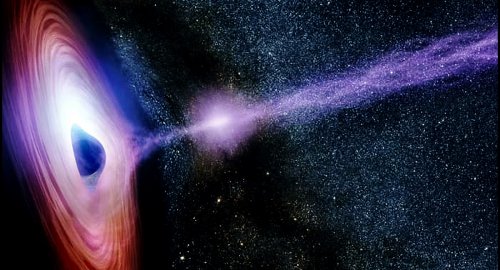
Scientists spot light behind a black hole for the first time

- 2-08-2021, 19:25
INA – SOURCES
In a short span of time, astronomers have taken us closer to black holes than ever with unprecedented images of the cosmic giants. Now, for the first time, scientists have seen the phenomena that takes place behind them.
As part of the breakthrough, researchers witnessed and captured the light from the back of a supermassive black hole 800 million light years away.
The latest breakthrough is a "key part of the puzzle to understanding" how the universe came to be, according to Stanford astrophysicist Dan Wilkins. What's more, it appears to confirm Einstein's theory of relativity from over a century ago.
While studying the bright flares of x-rays emanating from the black hole, a feature known as the corona, researchers also witnessed fainter flashes of light.
These were the "luminous echoes" of of the flares bouncing off the gas behind the black hole. This phenomena was first predicted by Einstein in his theory of relativity published in 1916.
“Any light that goes into that black hole doesn’t come out, so we shouldn’t be able to see anything that’s behind the black hole," Wilkins explained.
“The reason we can see that is because that black hole is warping space, bending light and twisting magnetic fields around itself,”
The supermassive black hole is 10 million times as massive as our Sun and located in the centre of a nearby spiral galaxy called I Zwicky 1. An international group of scientists witnessed the echoes using the European Space Agency's XMM-Newton and NASA’s NuSTAR space telescopes. Their findings were published in the journal Nature.
"The color of these flashes, the color of those echoes as well as the time that they were delayed after the original flare told us that these were the echoes coming from the gas that's hidden from our view behind the black hole," Wilkins noted.
"Some of it will shine back down onto the gas that's falling into the black hole, and this gives us really quite a unique view of this material in its final moments before it's lost into the black hole."
China Says It 'Firmly Opposes' US Military Aid To Taiwan
- International
- 07:36
First joint picture of Greenland Ice Sheet melting, ESA
- Multimedia
- 09:28
US Central Command: We killed ISIS terrorist leader Abu Yusuf in Syria
- International
- 24/12/20
Liverpool compete with Real Madrid to sign Olympique Lyonnais star
- Security
- 24/12/19
ISC, ADX discuss Strengthening Economic Ties
- Economy
- 24/12/16
Iraq assumes presidency of Arab Investment Company’s Executive Board
- Economy
- 24/12/17












